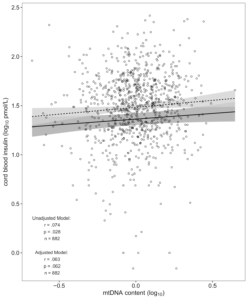 Professor Paolo Vineis of Imperial College London, and a researcher in the STOP project, recently co-authored an article in Frontiers in Genetics (www.frontiersin.org | 1 April 2019 | Volume 10 | Article 325), on The Cord Blood Insulin and Mitochondrial DNA Content Related Methylome.
Professor Paolo Vineis of Imperial College London, and a researcher in the STOP project, recently co-authored an article in Frontiers in Genetics (www.frontiersin.org | 1 April 2019 | Volume 10 | Article 325), on The Cord Blood Insulin and Mitochondrial DNA Content Related Methylome.
In the study, co-authored by Brigitte Reimann, Bram G. Janssen, Rossella Alfano, Akram Ghantous, Almudena Espín-Pérez, Theo M. de Kok, Nelly D. Saenen, Bianca Cox, Oliver Robinson, Marc Chadeau-Hyam, Joris Penders, Zdenko Herceg, Paolo Vineis, Tim S. Nawrot and Michelle Plusquin, the researchers explored shared epigenetic mechanisms between cord blood insulin levels and mitochondrial DNA (mtDNA) content, as a marker of mitochondrial function. By analyzing mtDNA content and insulin levels in 882 newborns of the ENVIRONAGE birth cohort they found that children with higher insulin levels at birth had a higher mitochondrial DNA content. Further, in a subset of this population, the researchers identified 33 pathways in common between cord blood mtDNA content and insulin levels of different biological functions, including neuronal development, gene regulation, drug-metabolism and biological ageing.
Metabolic factors including elevated insulin levels in early life are generally not regarded as harmful, especially when they are within the physiological range. Nevertheless, small alterations may be disadvantageous over time and increase the risk of metabolic diseases later in life. Mitochondria, the cell’s powerhouses, seem to play a key role in the etiology of insulin resistance. The variation in metabolic hormones at birth might be linked with mitochondrial function via changes in epigenetic programming, contributing to later life health or disease.
Frontiers in Genetics publishes rigorously peer-reviewed research on genes and genomes relating to all the domains of life, from humans to plants to livestock and other model organisms. The article talks about the relationship between mitochondrial DNA content and insulin levels at birth, which could predispose children to metabolic diseases later on.

